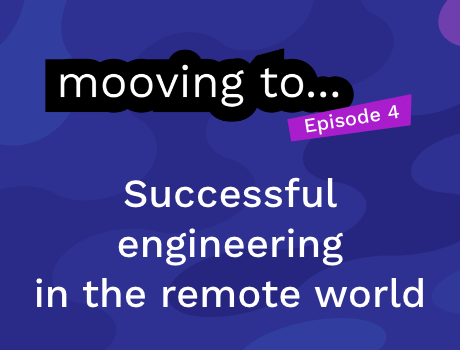Martha Sharpe, her husband, and four kids(!) moved to Atlanta to experience everything the city had to offer. She and her husband secured remote work, giving them the flexibility they were looking for. Everything was lining up for them just as they planned when the pandemic hit. This part of their story isn’t all too different from what a lot of people experienced at the start of 2020. What is unique about their story is that the Sharpe family decided to pack it up and work remotely from an RV for the next year.
The pandemic changed a lot of roles to be either hybrid or fully remote, leaving a lot of people scrambling to establish their new normal. Some people have risen to the challenge, while others are looking for tips to stay focused and sometimes even stay sane!
Watch the full episode below to hear how Martha and her family of 6, leapt at the opportunity for a nomad life and hit the road in an RV while continuing to work full time. Episode 4, Mooving to… Successful Engineering in the Remote World offers a unique perspective on work-life balance and expectations.
Balancing it All
Remote work is challenging, wherever you are. One of the biggest obstacles is the lack of separation between work and home. The smaller the space, the more difficult it becomes.
Ultimately, what Martha discovered is that there is no single approach to balancing it all. What worked for her didn’t always work for her husband, and success required a lot of testing and failing. Eventually, they both found their own approach to successful remote work.
It’s not just the space that’s challenging, managing your time can also be difficult. On one hand, you have flexibility and on the other hand, work hours are still 9-5. Communication is everything. If you’re going to step away for any reason, communicate that to your team, so there are set expectations and no one is relying on you when you’re not available.
Because Martha’s preferred setup included a standing desk, it was difficult for her to stand and focus for long hours. She found breaking up her work into blocks enabled her to stay focused and be highly productive. She gave herself the needed breaks to start something new or come back to a big project refreshed.
Adapting to Your Environment
Things weren’t perfect at first. Finding what works takes some time, testing, and failing until you figure it out.
Martha created a space unique to her needs. She knew she needed to have a master bedroom in the back of an RV that was separated from everything else. Identifying this crucial need, the Sharpe’s were able to narrow their RV choice down to a Class A built with that exact setup.
Martha found an area in the back of the RV for a makeshift standing desk with enough space for her computer, a small second monitor, a trackpad, keyboard, and padding for her feet.
Living in smaller spaces allows you to narrow in and identify the things you need vs items that are “nice to have.”
While Martha was able to create an environment that worked for her, sometimes the smaller space would prove to be a little too distracting for her husband. They quickly came up with a solution where her husband would drive to a nearby coffee shop for a few hours of “focus time.”
Productivity + Communication
There is this notion leftover from the industrial days that working 8 hours straight means you’re more productive. We’re not in a business where the more hours you put in, the more items you’ll put on an assembly line.
We’re in the business of “brain work,” where working 8 hours straight may make you less productive.
For Martha, she found she is most productive in 3-hour sprints. Anything more than that, and she needed to walk away. If she forced herself to stick with it longer than 3 hours — to just get it done — she found herself more confused, more frustrated, and more bugs arose.
Your brain needs time to recover.
Building in breaks requires an environment of trust and a culture of communication. Especially in a remote environment, the more immediate communication can be, the better. Choose your preferred communication channel and communicate often. But also be mindful with your communication. Intentionally set your filters and boundaries with whatever communication tool you’re using.
Not all companies are built for successful remote work. Just as much as you need to set expectations and communicate to your team, managers often set the tone for work-life balance.
Working from the road gave Martha and her family the flexibility to discover their best working style while supporting each other, seeing new sights, and learning together.






